Why is foam leaking from my dishwasher?
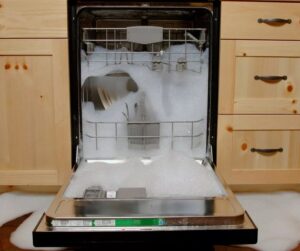 Under normal conditions, after the program ends, only clean dishes remain in the dishwasher chamber. Unfortunately, sometimes an unpleasant situation arises when the washing procedure has already completed, and foam begins to flow from under the dishwasher door. If you open the door at this moment, you will see that foam is coming out of the dishwasher in clouds that fall on the dishes. Because of this, only washed utensils have to be washed again. Why does a similar problem happen with PMM?
Under normal conditions, after the program ends, only clean dishes remain in the dishwasher chamber. Unfortunately, sometimes an unpleasant situation arises when the washing procedure has already completed, and foam begins to flow from under the dishwasher door. If you open the door at this moment, you will see that foam is coming out of the dishwasher in clouds that fall on the dishes. Because of this, only washed utensils have to be washed again. Why does a similar problem happen with PMM?
What do we check first?
In normal condition, the PMM washing chamber should be clean after completion of the procedure, but consumers often notice increased formation of foam, which only contaminates the dishes. This problem usually occurs due to incorrect operation of the PMM, rather than due to a breakdown of the unit.
Most often, the reason that foam flows is due to a small blockage that appears on the mesh of the garbage filter. If you often load the machine with dishes that have a dense layer of fat on them, then at one point the fat will clog the microscopic holes at the bottom of the PMM chamber. In this case, the water will not drain well, therefore, the remaining detergents will linger in the machine’s hopper even after work is completed, forming foam.
Also foam leaks due to incorrect settings. Standard machines can work with both cleaning powders and dishwashing tablets. Due to the fact that the structure of detergents is strikingly different from each other, they dissolve in water differently. Because of this, different settings must be made for each type of detergent.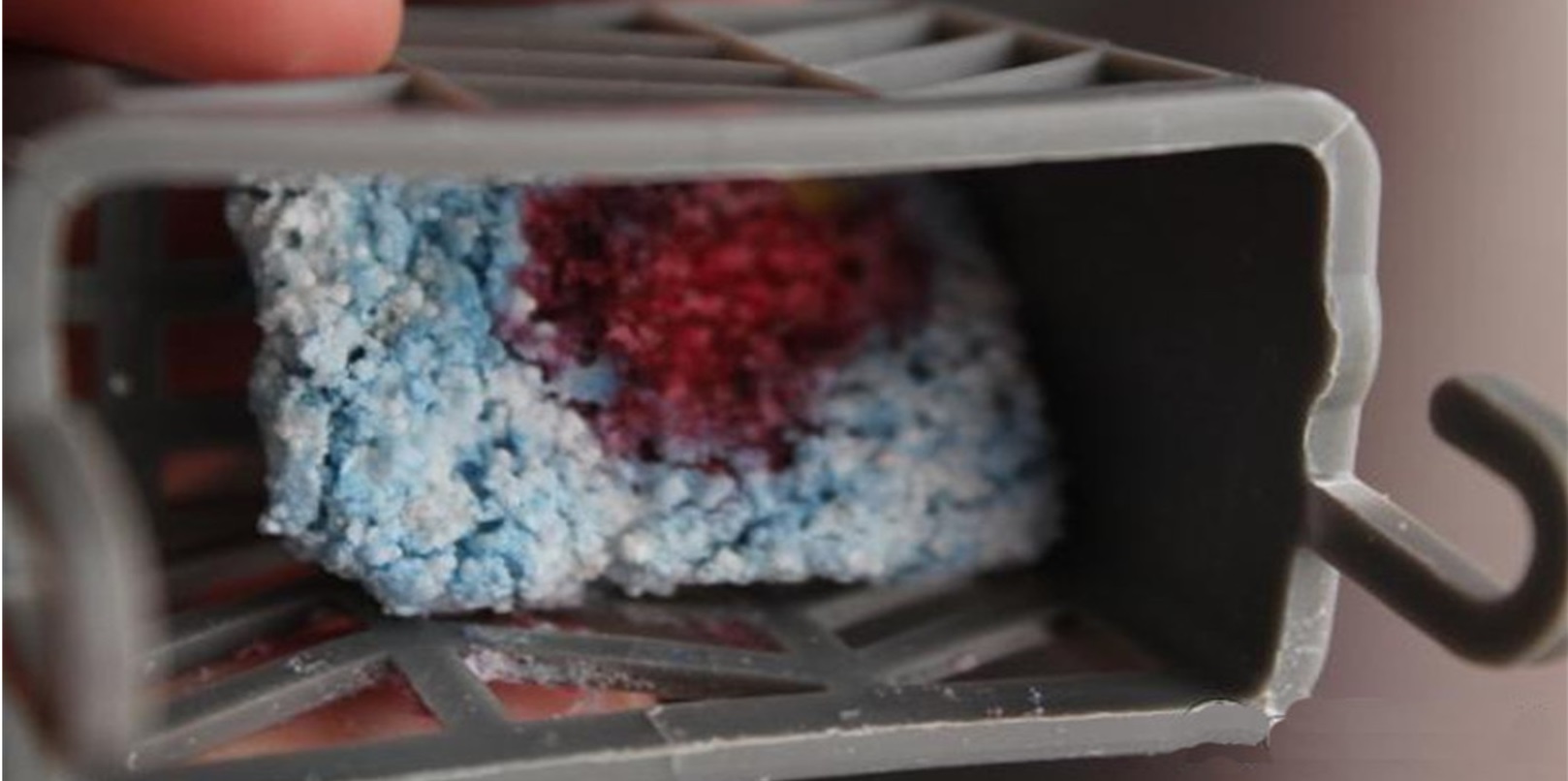
If foam remains in the PMM without powder, then this is a sign that the detergent has dissolved unevenly. It is possible that the machine previously worked on powder, and now it is used with tablets, so the settings have not yet been changed.
The compressed tablets take longer to dissolve in water than regular powder and continue to foam even during rinsing, when the dishes are washed with clean water.
In addition, the cause of foam may be leftover food. A dishwasher is designed to perfectly clean dishes after eating, but this does not mean that it can be used to wash seriously soiled plates, bowls, cups and other cutlery with pieces of food left on them. Many products can react chemically with water and detergents, causing foam to flow. For example, egg whites, dairy products and dough behave this way.
Foam can also appear if you use counterfeit detergents. This applies not only to counterfeit products, but also to various household products: many use vinegar, soda, citric acid, detergents like Fairy, and so on.
How to “deal” with foam in PMM?
Due to the fact that the presence of foam only indicates improper use of the machine or minor malfunctions, it is not difficult to deal with foam.
First of all, let's consider the situation when the mesh filter, which is located at the bottom of the PMM, is clogged. This can happen if a large number of pieces of food, fat, various small debris and scale accumulate on it. If clogged, the water will no longer drain well, so after finishing work, foam will remain at the bottom of the dishwasher.
Fixing this problem is very simple.
- Open the camera door.
- We remove the lower basket of the PMM.
- We unscrew the necessary part and the metal mesh located at the back from the pallet.
- Thoroughly wash all parts of the filter with a sponge.
- We install the parts in their place.
To prevent the appearance of foam, manufacturers advise carrying out such cleaning of machine parts at least twice a month.
If the reason for excessive foaming lies in incorrect settings, then fixing it is even faster and easier. To resolve this problem, you need to change the machine's settings using the control panel. Most likely, there was a change of detergent, so the full operating cycle of the PMM is set shorter than the dissolution period of the tablet.
All you need to do is increase the duration of washing and rinsing. If the machine has a function for automatically recognizing the type of product used, then you can only change the mode from powder to tablet.
If foam flows due to leftover food, then it’s time to think about the rules for operating the device. Do not wash leftover cottage cheese, dough, egg whites, dairy products or foods high in protein in the machine. Manufacturers recommend not washing very dirty dishes in the dishwasher.
Very greasy dishes with food residues should first be rinsed under the tap to remove large stains.
Finally, the reason for the appearance of foam may be the use of third-party dishwashing detergents. For example, it could be ordinary dish washing gel, soda, vinegar, and more. If this happens, then first of all you need to wash the inside of the dishwasher to remove traces of unsuitable products. To do this you need:
- thoroughly wipe the PMM tray with a cleaning cloth or sponge;
- wash the compartment for tablets and powders from third-party cleaning products;
- Use a specialized detergent to start the empty machine into its normal operating cycle.
After completing these steps, you should check whether there is any foam left in the machine. If yes, then the points must be repeated again. Do not use regular household dishwasher detergents unless you want to troubleshoot problems.
If there is a lot of foam
It happens that during operation, so much foam accumulates inside the machine that it begins to fall out of the washing chamber. It crawls out of all the cracks. To fix this, you need to do the following:
- stop the PMM, open and remove the dishes from the chamber;
- remove water and foam using a ladle, glass or any other convenient utensil;
- treat the inside of the car with a sponge;
- wipe the device hopper dry.

There is a chance that even in this case the unit will not be completely cleaned, since some of the foam will remain in the hoses and the bottom of the machine. To avoid having to remove the foam again the next time you wash, you should pour half a glass of vinegar into the pan along with 3 large tablespoons of salt.
Afterwards, you need to turn on the dishwasher for a couple of minutes, wait until it is washed from the inside, and then check whether foam still appears. If necessary, the procedure is repeated until the device is completely clean.
Interesting:
Reader comments
- Share your opinion - leave a comment
Categories
Washing machine repair


For buyers

For users

Dishwasher

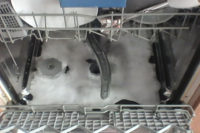


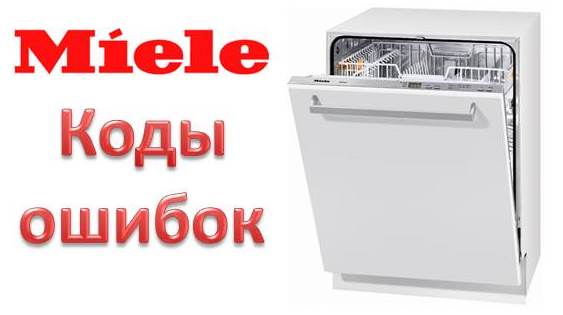

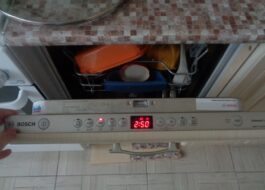










Add a comment